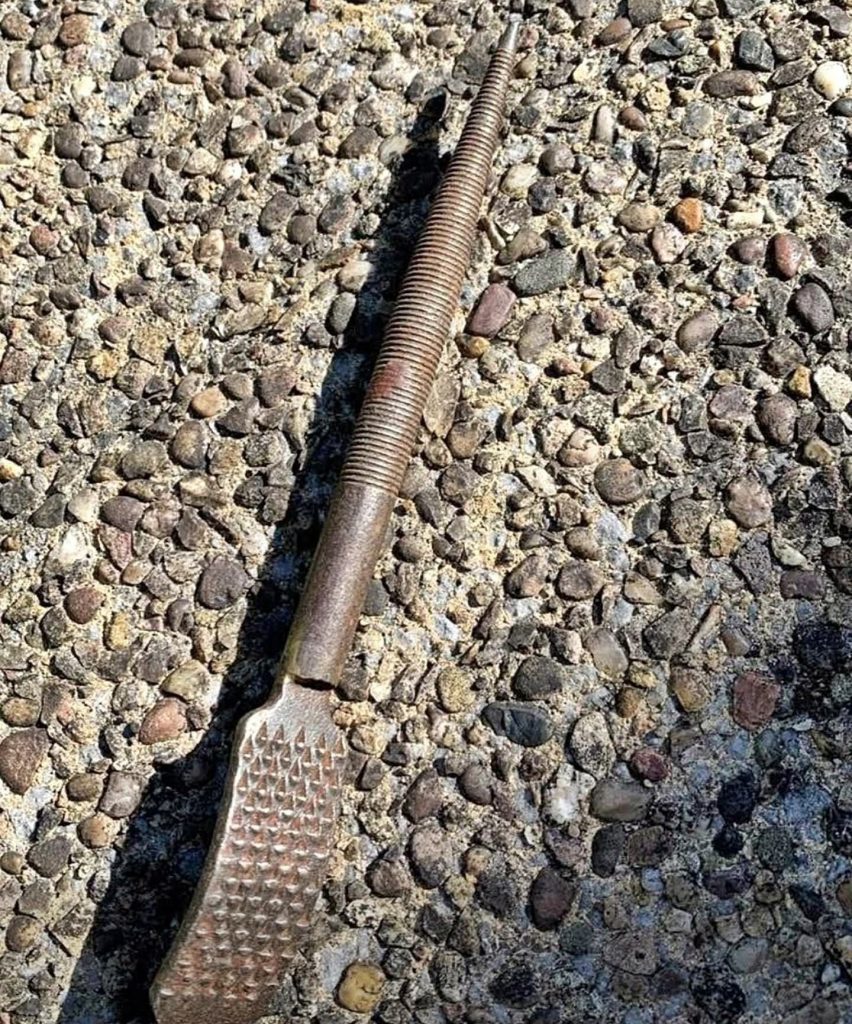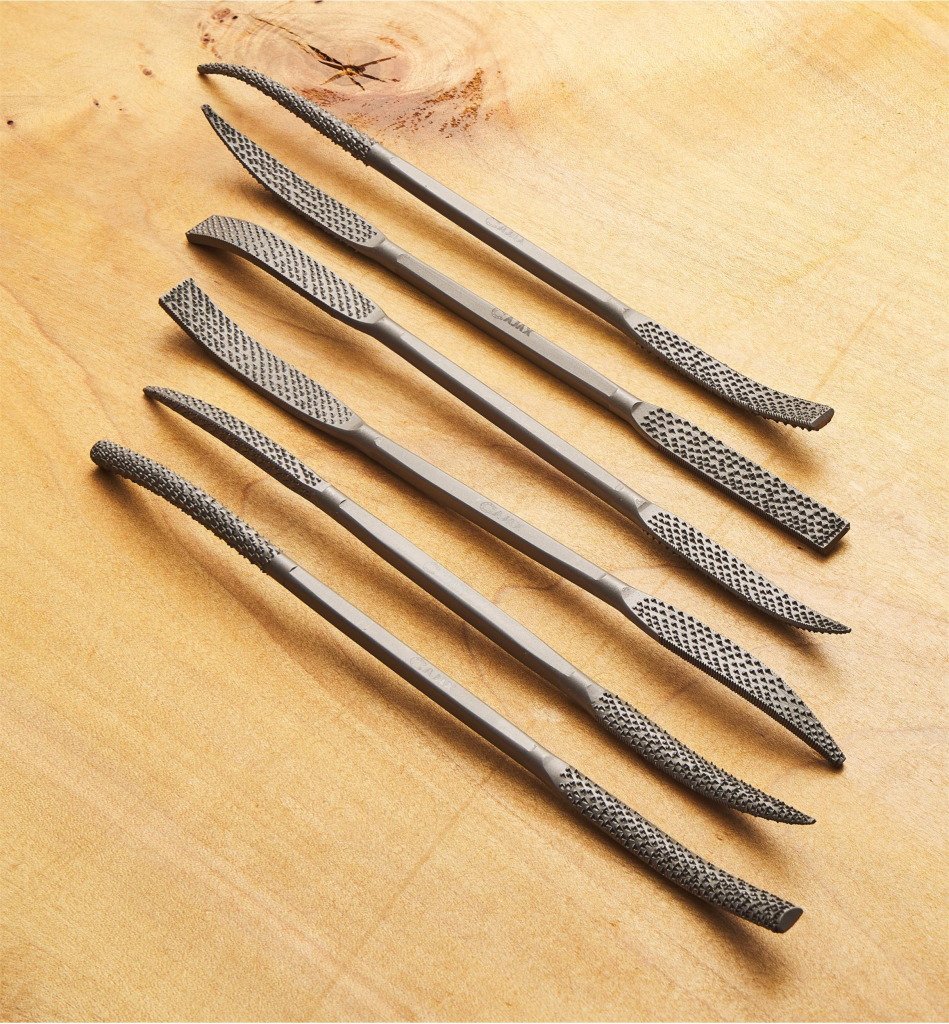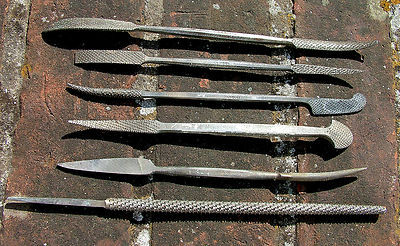If You’ve Seen This Before, You’re Definitely Old! 🕰️ The Forgotten Tool That Once Kept Every Tire Rolling
There are some objects that instantly take us back in time — small, rusty, and seemingly insignificant items that once played a huge role in everyday life. If you’ve ever fixed a flat tire in the days before high-tech auto shops and digital air compressors, you might recognize this curious-looking tool. It’s not a weapon or a strange piece of farm equipment. Nope — this little gadget was once a hero in every repairman’s kit.

Let’s take a nostalgic trip back to the era of hands-on craftsmanship and explore what this mysterious tool was used for — and why it deserves a spot in the museum of mechanical history.
The Mystery Object: A Glimpse Into the Past
At first glance, this old metal piece looks a bit odd — half-screw, half-file, and entirely confusing to anyone under 40. But to those who grew up around workshops, bicycle repair stations, or old-fashioned garages, it’s instantly familiar. This is a tire patch buffing tool, also known as a tire rasp tool.
In the pre-digital age of tire repair, this tool was an essential part of the process for patching inner tubes and rubber tires. Every mechanic — from bike fixers to car repairmen — had one of these in their toolkit.
What Exactly Is a Tire Patch Buffing Tool?
The tire buffing tool was designed to prepare damaged tires for patching. When a tire or inner tube developed a puncture, the surface around the hole had to be treated before applying a patch. Simply slapping on a patch wouldn’t work — the smooth rubber surface made it hard for glue to stick.
Video : A Proper Tire Repair? See How It’s Done.
That’s where this tool came in. The flat, textured end acted like sandpaper for rubber, scraping and roughening the surface around the hole. This made it easier for adhesive and patch materials to bond securely. The long, threaded shaft could be attached to a hand drill or rotary tool, spinning rapidly to make the process faster and smoother.
In short, this little tool helped make sure every patch job held strong — even when the tires hit rough roads.
How It Worked: The Old-School Tire Repair Process
Before tire repair became automated, fixing a puncture was an art form. Here’s how mechanics used tools like this one:
1️⃣ Locate the puncture: The inner tube or tire was inflated and dipped in water — bubbles revealed where the air was leaking.
2️⃣ Mark and clean the area: The damaged area was wiped clean of dirt or grease to ensure a strong bond.
3️⃣ Use the buffing tool: The metal rasp was used to roughen up the rubber surface around the puncture. The small metal teeth on the tool’s flat end created tiny grooves for the adhesive to grip.

4️⃣ Apply the patch and glue: A thin layer of adhesive was spread over the prepared surface. Once tacky, a rubber patch was pressed onto the area, sealing the leak.
5️⃣ Test for leaks: After drying, the tire was reinflated to check if the patch held firm.
This simple, manual process was reliable — and this small tool played a critical role in ensuring that tires stayed sealed and safe.
Why This Tool Mattered Back Then
Before modern tire sealants and high-pressure vulcanizing equipment, this kind of manual labor was the standard. A tire rasp tool wasn’t just a convenience — it was a necessity.
It represented an era when repairs were done by hand, not replaced by machines. People fixed what they had, and tools like this one reflected that spirit of practicality and ingenuity. Every local garage, roadside repair shop, and even traveling mechanic had one tucked into their kit.
The design was simple but brilliant — durable, easy to use, and versatile enough to handle anything from a bicycle tire to a truck’s inner tube.
The Design: Small, Strong, and Purpose-Built
If you look closely, you’ll notice that the tool’s flat end is covered in tiny, pyramid-like ridges. These acted like mini blades that gently scraped the rubber. Unlike sandpaper, which wore down quickly, this metal surface could be used repeatedly without losing its bite.
Video : Tire Drilling and Buffing Speeds
The threaded handle allowed it to be screwed into a drill or a manual rotary tool, giving users control over speed and precision. The narrow middle section provided a strong grip for hand use — a true multi-functional design that’s rare to see today.
It’s a perfect example of mid-20th-century engineering: built to last, easy to use, and designed for one specific purpose — doing the job right.
Why You Rarely See It Anymore
With the rise of tubeless tires, automatic repair machines, and modern adhesives, this tool has quietly faded from use. Most tire shops now rely on electric buffers and advanced sealing systems that make the old manual rasp tool obsolete.
But for collectors, vintage mechanics, and anyone who grew up in the golden age of hands-on craftsmanship, finding one of these is like uncovering a piece of industrial history. It’s a reminder of simpler times — when fixing something yourself wasn’t just practical, it was a point of pride.
A Symbol of a Bygone Era
Objects like this tell powerful stories. They remind us that before modern technology streamlined everything, people relied on skill and grit. Each repair required patience, attention, and the right touch — qualities that defined the craftsmen of that time.

The tire buffing tool may look outdated today, but it stands as a tribute to an age of mechanical know-how. It’s more than just a piece of metal — it’s a snapshot of how the world once worked, one repair at a time.
Conclusion: The Tool That Kept the World Moving
If you’ve ever seen one of these old buffing tools, consider yourself lucky — you’re looking at a true relic of 20th-century repair culture. Long before sleek machines and disposable parts, this little instrument was responsible for keeping countless bicycles, motorcycles, and cars on the road.
It’s small, it’s simple, but it’s also a reminder of how far technology — and craftsmanship — has come. For those who remember using one, it’s more than just a rusty tool. It’s a memory of long afternoons in the garage, the smell of rubber and oil in the air, and the satisfaction of fixing something with your own two hands.
So, have you ever used one of these? If you recognized it instantly, congratulations — you’re officially a vintage expert! 🔧